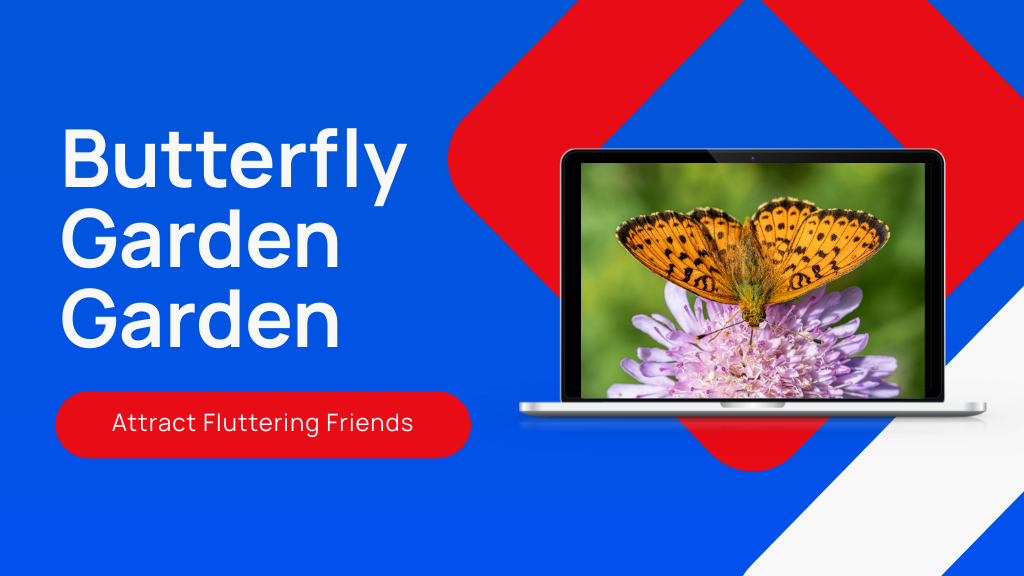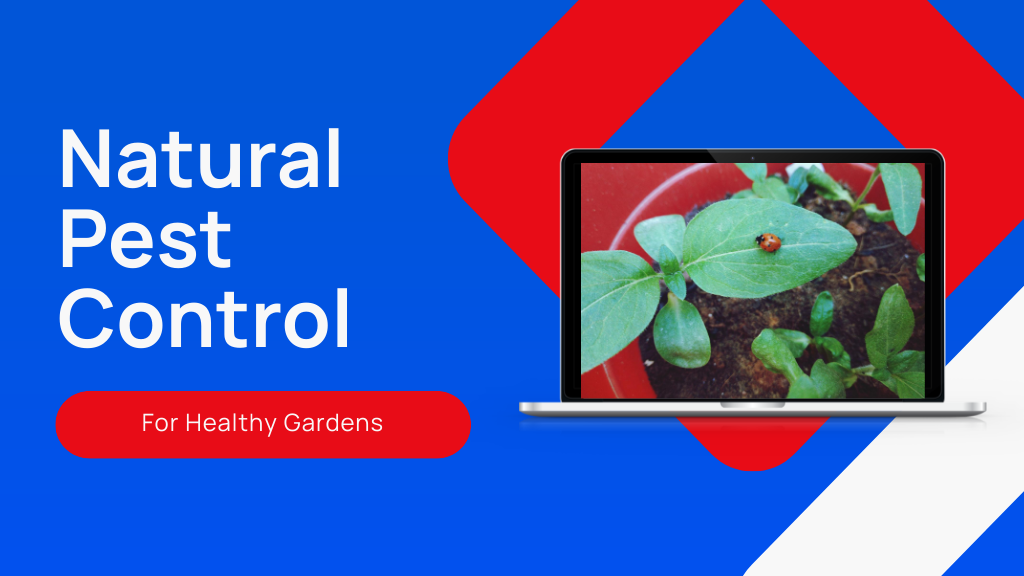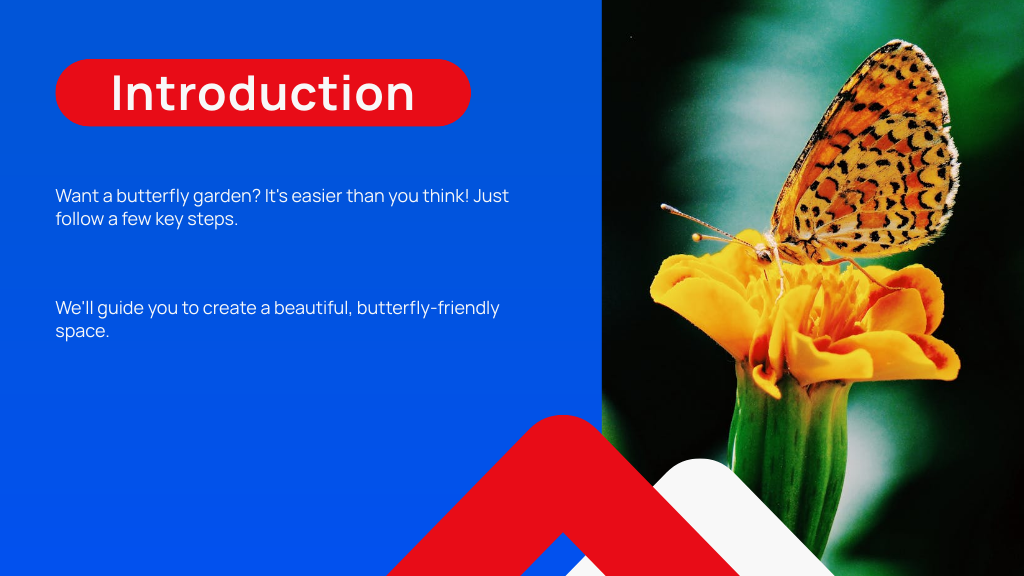
To create your own butterfly garden, pick a sunny spot with 6-8 hours of direct sunlight and shelter from strong winds. Plant nectar-rich flowers like butterfly bush and coneflower, plus host plants such as milkweed for caterpillars. Add flat rocks and a moist butterfly puddle for resting and hydration. Avoid pesticides to protect your visitors and encourage natural predators. Keep these basics in mind, and you’ll find plenty more tips to help your garden thrive beautifully.
Select the Perfect Location for Your Butterfly Garden
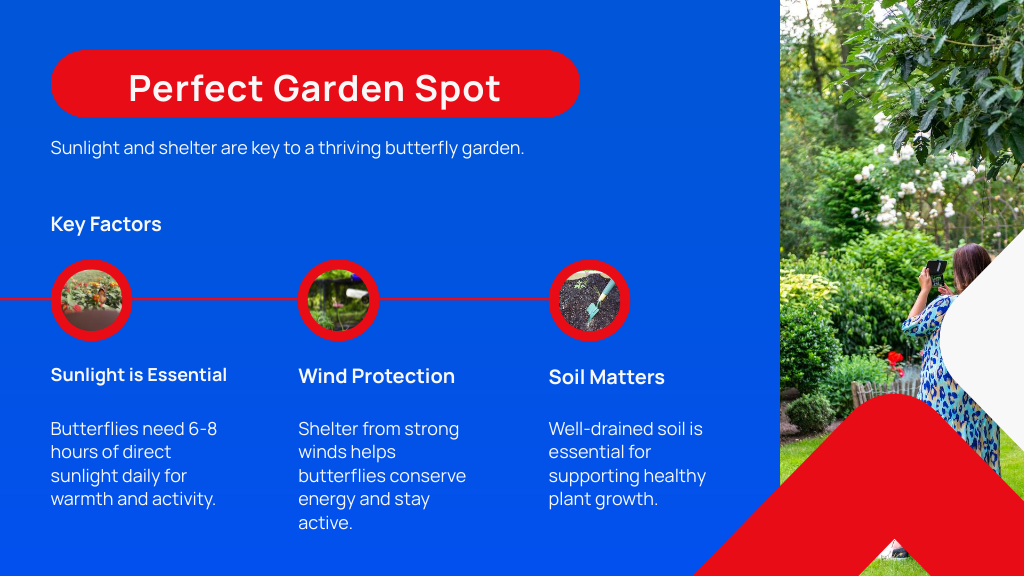
To create a thriving butterfly garden, you’ll want to pick a spot that gets at least 6 to 8 hours of direct sunlight each day. This guarantees maximum activity from garden butterflies, which need warmth to stay active.
When considering butterfly garden ideas, choose an area sheltered from strong winds and heavy rain, ideally near broad-leafed trees or shrubs that act as natural windbreaks. Assess the soil quality too—well-drained soil supports the healthy growth of plants that attract butterflies and gardens thrive on.
Aim for about 100 square feet to accommodate a variety of nectar and host plants. Including mid-sized dense conifers like spruce or juniper as windbreaks can create a comfortable environment, helping your garden butterflies flourish all season long.
Incorporate Rocks and Water Features
While planning your butterfly garden, incorporating rocks and water features can make a big difference in attracting and supporting butterflies. Place large, flat rocks in sunny spots to offer butterflies warm sunbathing and resting areas protected from wind.
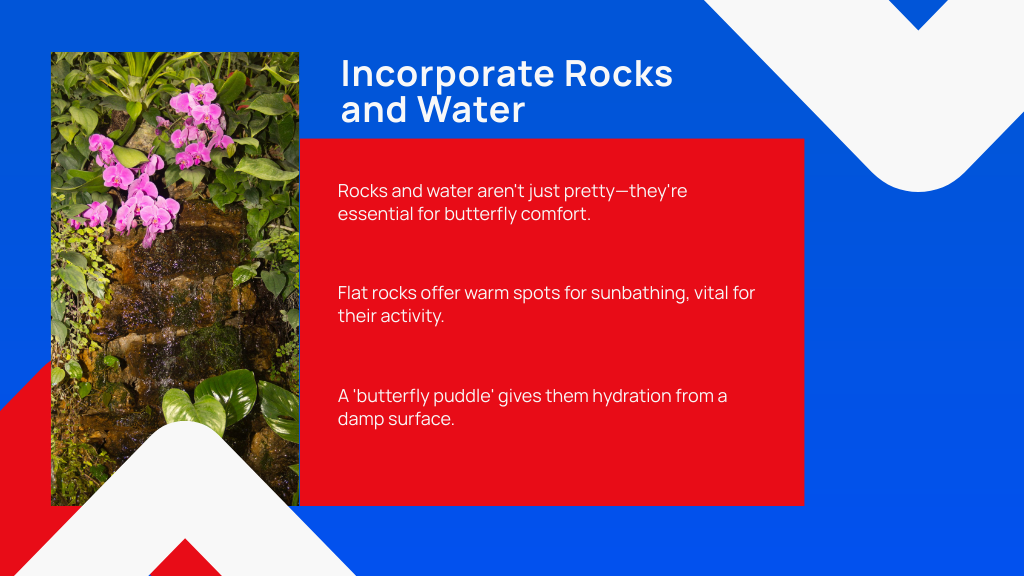
Large, flat rocks in sunny spots create perfect warm, sheltered resting places for butterflies.
Create a butterfly puddle by mixing sand and soil in a shallow bowl, surrounded by flat stones that absorb sunlight, forming a cozy hydration zone.
Keep the puddle moist without standing water since butterflies prefer damp surfaces for drinking. For moisture retention, sink a bucket filled with wet sand and soil into the ground.
Scatter varied rock sizes and shapes throughout your butterfly garden to boost visual appeal and provide diverse habitats, making your garden both functional and inviting for these beautiful pollinators.
Choose and Plant Butterfly-Friendly Flowers
Adding rocks and water features sets a welcoming stage, but the heart of your butterfly garden lies in the flowers you choose. Select a variety of nectar-rich plants like butterfly bush, coneflower, and bee balm that bloom at different times to keep butterflies coming throughout the season. Plant these in drifts instead of isolated patches to improve their visibility and accessibility.
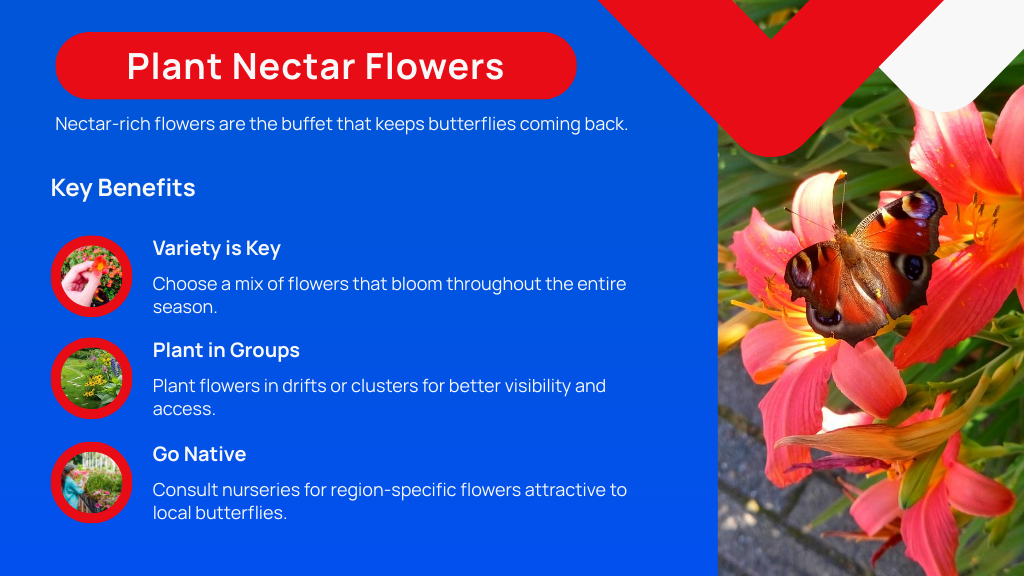
Mix annuals and perennials, aiming for at least 10 plants of two different species to maintain continuous color and interest. Be sure to consult local nurseries to find region-specific flowers that attract native butterflies.
Provide Food Sources for Caterpillars
Since caterpillars rely on specific host plants for food, providing these in your garden is essential for supporting butterfly life cycles. Different butterfly species need particular plants to thrive—for example, monarch caterpillars feed exclusively on milkweed, while black swallowtail caterpillars prefer parsley, dill, and fennel.
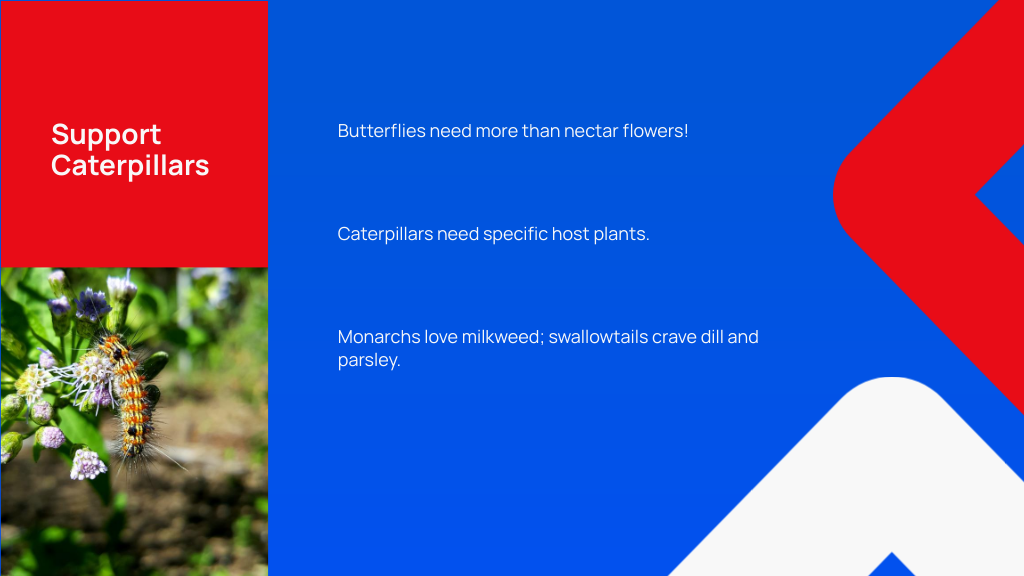
To attract a variety of butterflies, include a mix of native host plants tailored to your local species. Native plants are better adapted to your environment and improve caterpillar survival. Do some research to identify which plants caterpillars in your area need the most.
Once planted, keep a close eye on their health throughout the growing season, ensuring they remain robust enough to nourish caterpillars as they develop. This commitment helps create a thriving habitat for butterflies in every stage of their life cycle.
Maintain Your Garden Without Pesticides
To keep your butterfly garden healthy, you’ll want to avoid pesticides that can harm the very insects you’re trying to attract. Treat your garden as a miniature ecosystem by promoting biodiversity—this supports beneficial insects that naturally control pests.
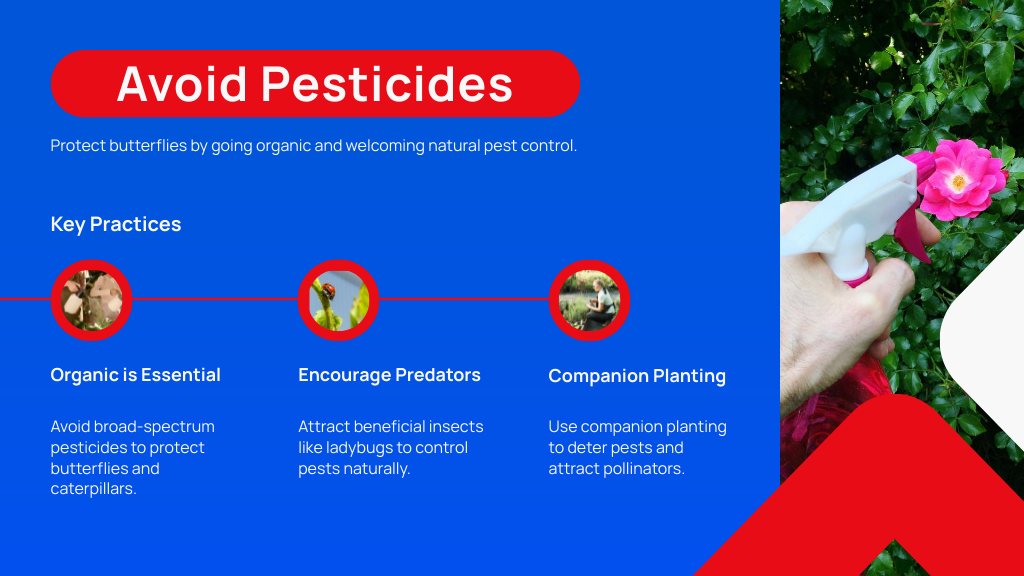
Avoid broad-spectrum pesticides; instead, use organic alternatives like insecticidal soaps, oils, or microbial insecticides for targeted treatments. Regularly check your plants for natural predators and encourage their presence to keep pest populations in balance. Plant a diverse mix of nectar-rich flowers and host plants to reduce pest problems and attract various butterfly species.
Finally, educate yourself on organic gardening techniques, such as companion planting and maintaining healthy soil, to build a thriving, pesticide-free garden that butterflies and other pollinators will love.
Conclusion
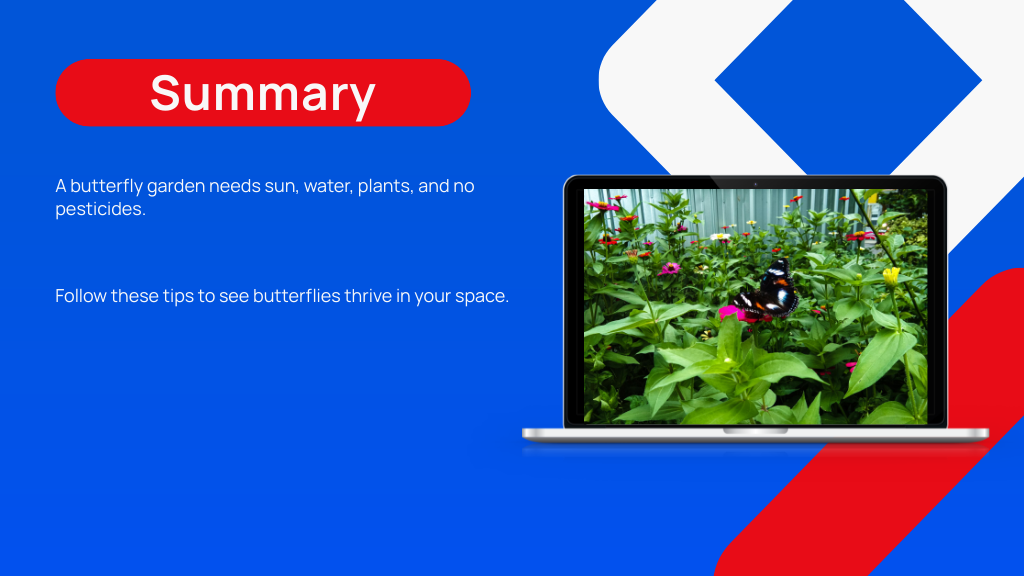
Creating your own butterfly garden means embracing both the delicate beauty of fluttering wings and the rugged resilience of nature. While vibrant flowers invite butterflies to dance, the rocks and water quietly sustain life’s balance. By avoiding pesticides, you protect fragile caterpillars and strengthen your garden’s health. It’s a gentle reminder: in nurturing something so fragile, you cultivate strength, showing that even the smallest creatures thrive amid thoughtful care and wild freedom.


